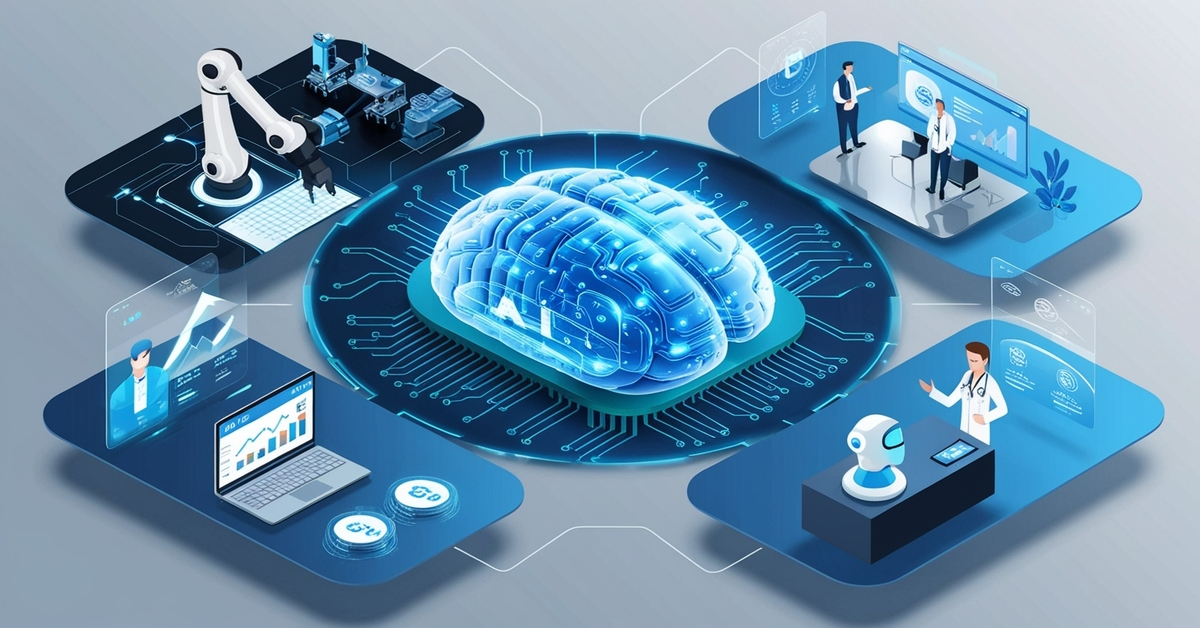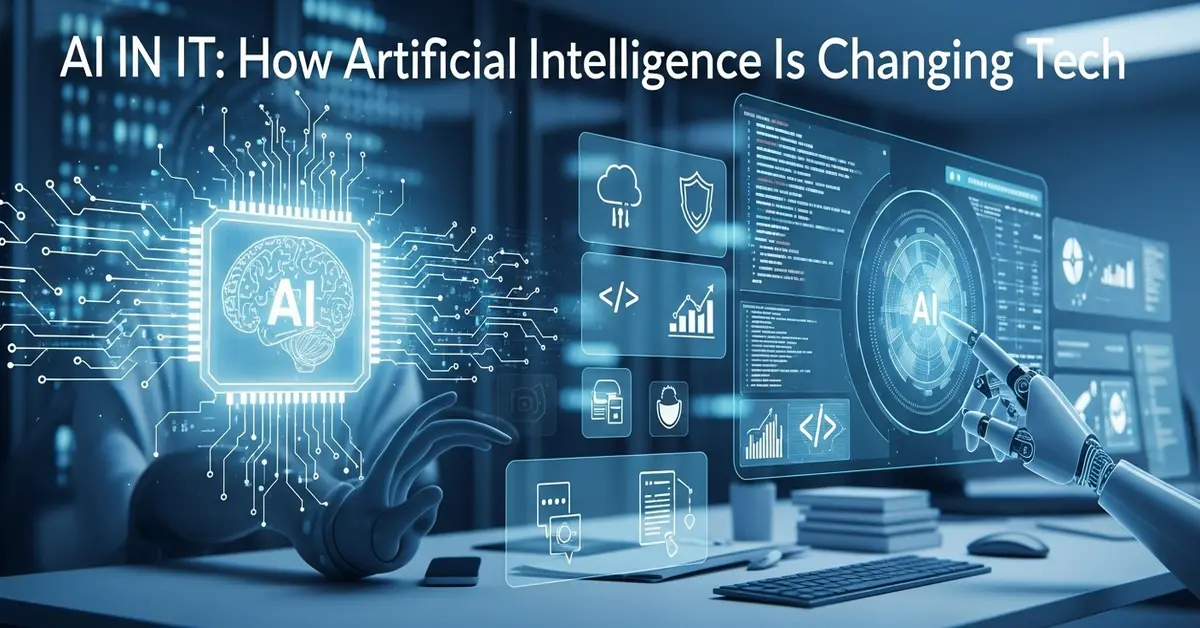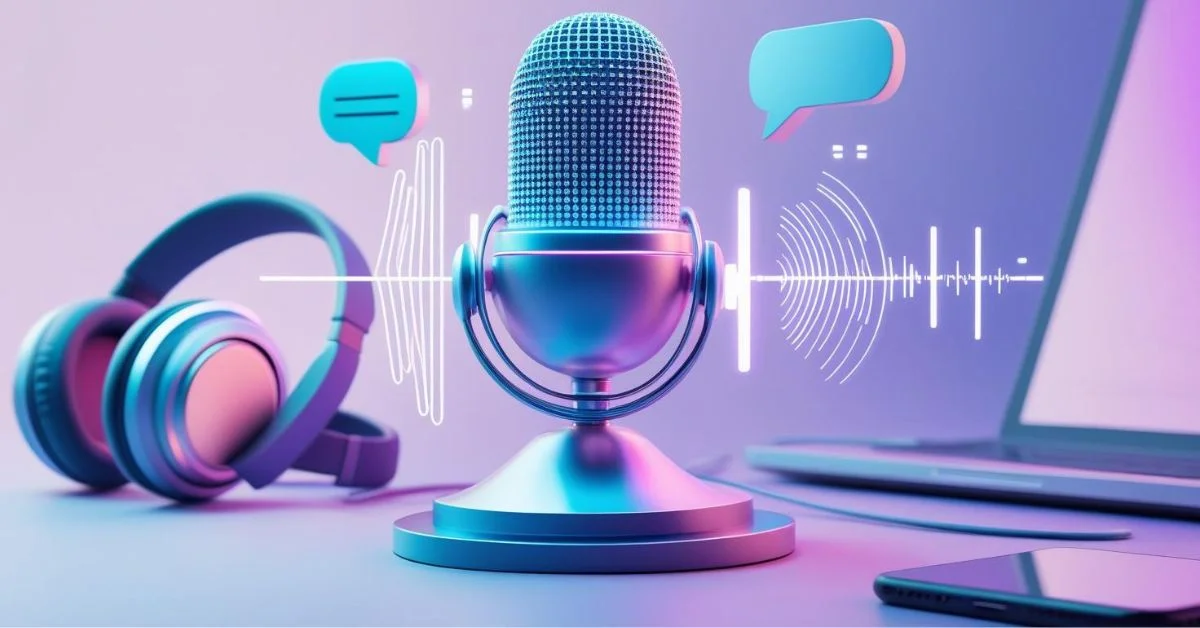Artificial Intelligence, or AI, has become a common word in our daily lives and in 2025, it is shaping the way people work like never before. From writing emails to analyzing huge amounts of data in seconds, AI tools are making our jobs easier, faster, and more productive. Businesses, freelancers, teachers, marketers, and doctors are all using AI in some way to save time, cut costs, and get better results.
AI Writing and Content Creation Tools
One of the most visible changes in 2025 is how people create content. Writers, bloggers, social media managers, and even students are using AI writing tools to help with daily tasks. These tools can write emails, blog posts, social media captions, ad copies, and more.
Popular AI writing tools in 2025 include:
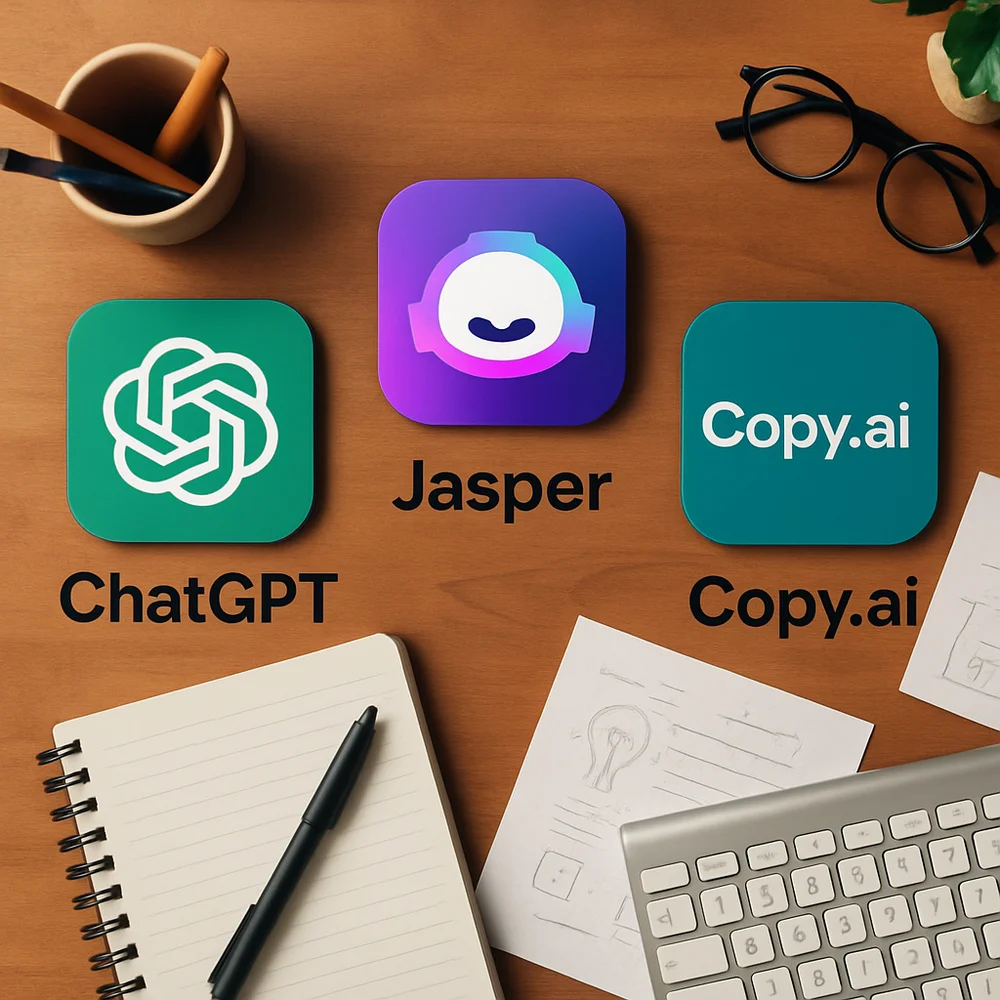
- ChatGPT: Used to write articles, answer questions, and help with coding
- Jasper: Great for creating marketing content and ad copies
- Copy.ai: A useful assistant for generating engaging product descriptions and crafting professional emails
These tools do not replace human creativity but act like smart assistants that help you think faster and better. For example, a marketer can enter a few words into Jasper and get a full ad copy in seconds. Then they can edit it to match their brand tone.
AI for Business Automation
Companies are using AI to automate boring and repetitive tasks like data entry, customer support, and appointment scheduling. This means employees have more time to focus on creative and high-value work.
Examples of AI tools for automation:
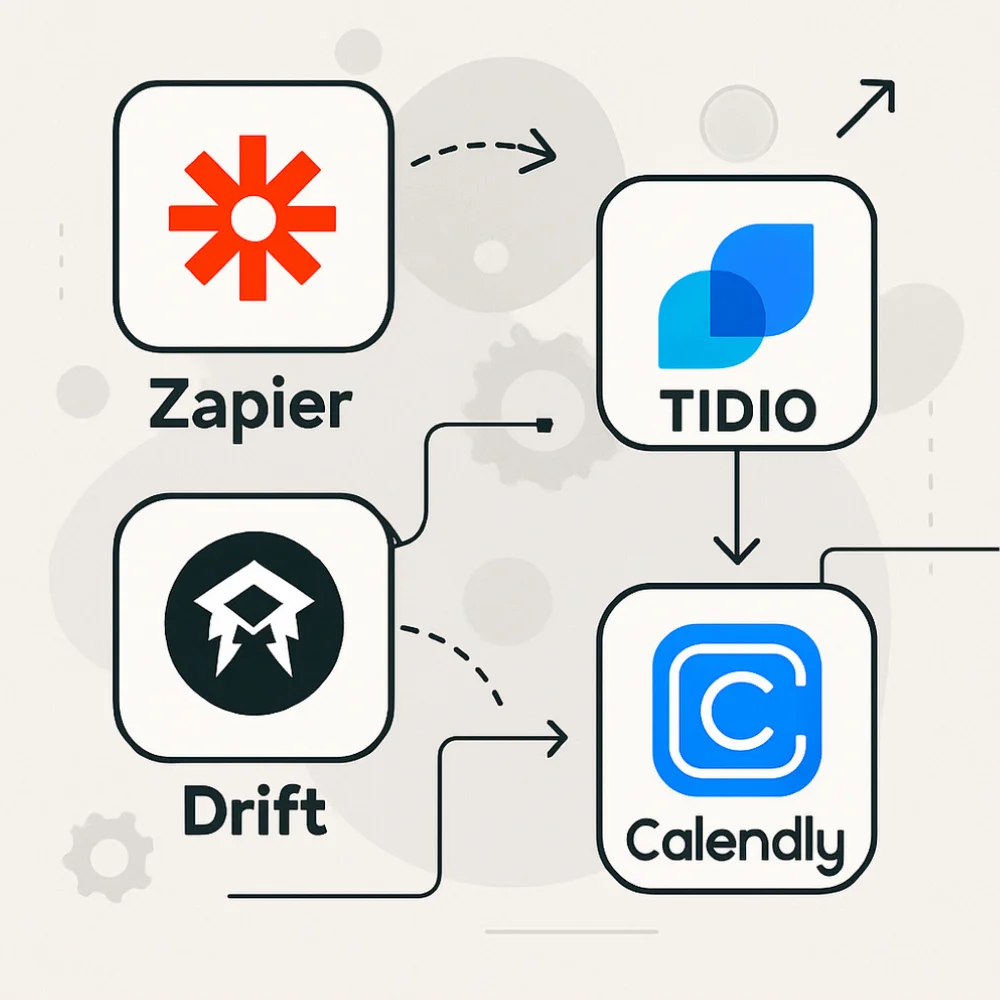
- Zapier powered by AI: Seamlessly links your favorite apps and automates routine tasks without manual effort
- Tidio and Drift: AI chatbots that talk to customers on websites, answer frequently asked questions, and collect leads
- Calendly with AI: Schedules meetings based on preferences and time zones
With these tools, even small businesses can offer 24 hours customer support and never miss a customer inquiry.
AI in Remote Work and Team Collaboration
Working from home or remotely is common now and AI tools are making remote work smooth and connected.
Useful tools in this area include:
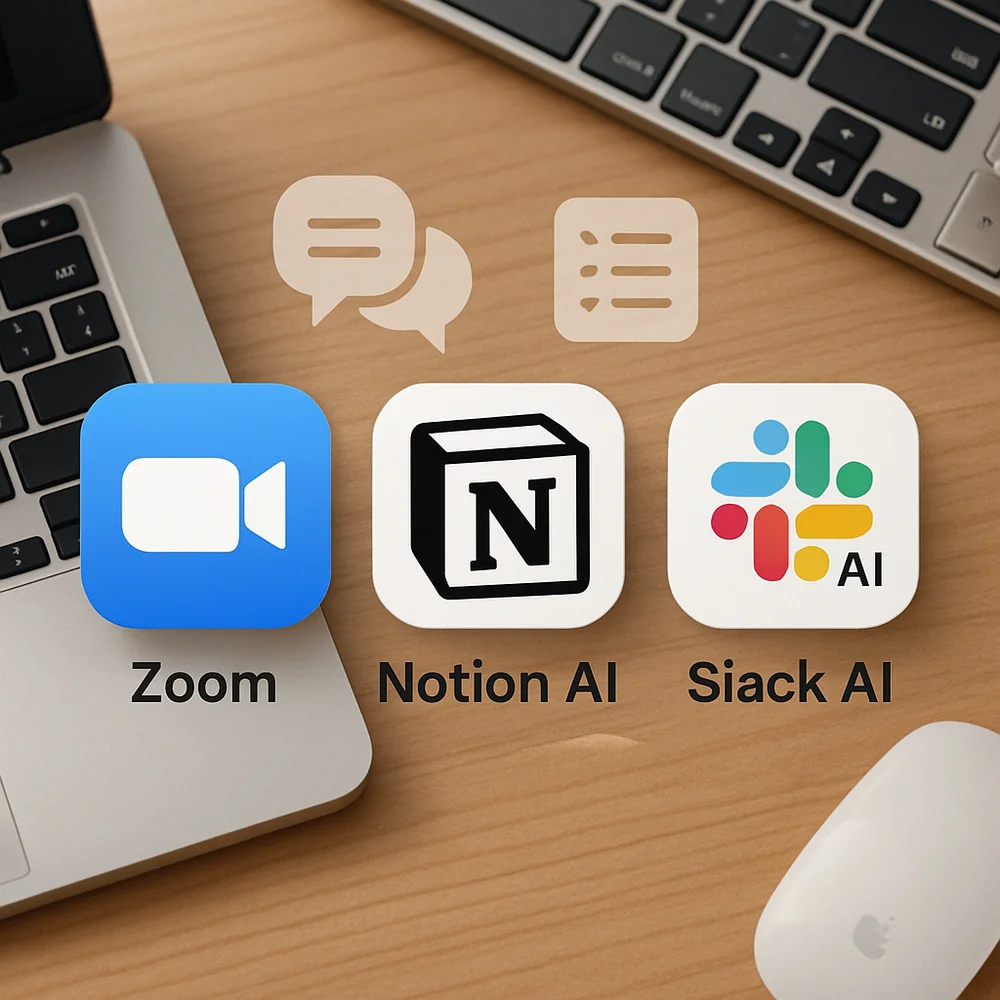
- Zoom with AI features: Summarizes meetings, gives highlights, and provides action steps
- Notion AI: Helps teams take notes, write reports, and manage projects in one place
- Slack AI: Organizes conversations, pulls out important messages, and even suggests replies
These tools reduce the need to go through long emails or meeting recordings. AI picks the important parts and presents them in a simple way.
AI in Hiring and HR
Human resource departments are now using AI to improve hiring and employee management. In 2025, AI scans resumes, shortlists candidates, and even conducts first-round interviews using video bots.
Some popular AI tools in HR include:
- HireVue: Uses artificial intelligence to conduct interviews and evaluate candidates based on their responses and behavior
- Pymetrics: Matches job seekers with roles using brain games and performance data
- Breezy HR: A comprehensive platform that streamlines job postings, applicant tracking, and interview management
AI ensures faster hiring and less human bias. It also helps new employees settle in quickly with AI-based onboarding programs.
AI in Customer Support and Sales
If you have chatted with a company online recently, you probably talked to an AI chatbot. In 2025, these chatbots are very smart. They understand human language, reply instantly, and can solve most basic issues without needing a human agent.
AI tools used in support and sales:
- Intercom AI: Handles customer support chats with natural replies
- HubSpot AI: Helps sales teams find leads, send emails, and manage contacts
- Zoho SalesIQ: Tracks visitors on websites and sends automatic messages to engage them
These tools increase customer satisfaction and reduce the workload for human agents.
AI in Design and Creativity
Designers and content creators are using AI tools that generate graphics, videos, and logos with just a few clicks. Even people with no design experience can now create beautiful visuals using AI.
Leading AI creative tools include:
- Canva AI: Suggests designs, resizes graphics, and writes text for visuals
- DALL·E: Creates realistic images from text prompts
- Runway ML: Edits videos using AI, removes backgrounds, adds effects, and more
These tools are especially useful for small businesses or freelancers who need content quickly but do not have a big team or budget.
AI in Data Analysis and Decision Making
AI can scan millions of rows of data in seconds and find patterns that humans might miss. This proves highly beneficial in industries such as marketing, finance, and healthcare
Examples of AI data tools:
- Google Looker Studio with AI: Shows data insights and trends
- MonkeyLearn: Analyzes text feedback from customers
- Power BI with AI: Helps in making business decisions using clear visuals and predictions
Instead of spending hours making reports, you can now ask an AI tool to give you a summary and suggestions based on real-time data.
AI in Education and Training
AI is also helping teachers and trainers provide better learning experiences. In 2025, many schools, online platforms, and companies use AI to personalize learning.
Popular AI education tools:
- Khan Academy’s AI tutor: Answers student questions in a friendly way
- Duolingo Max: Uses AI to teach languages through stories and conversations
- Coursera enhanced with AI coaches: Delivers personalized learning experiences and provides guidance for career development
AI tracks how fast you learn, what you find hard, and suggests the next step. It feels like having a personal tutor.
AI in Healthcare and Medicine
Doctors and hospitals are using AI to assist with diagnosis, patient records, and treatments. These tools do not replace doctors but help them work faster and more accurately.
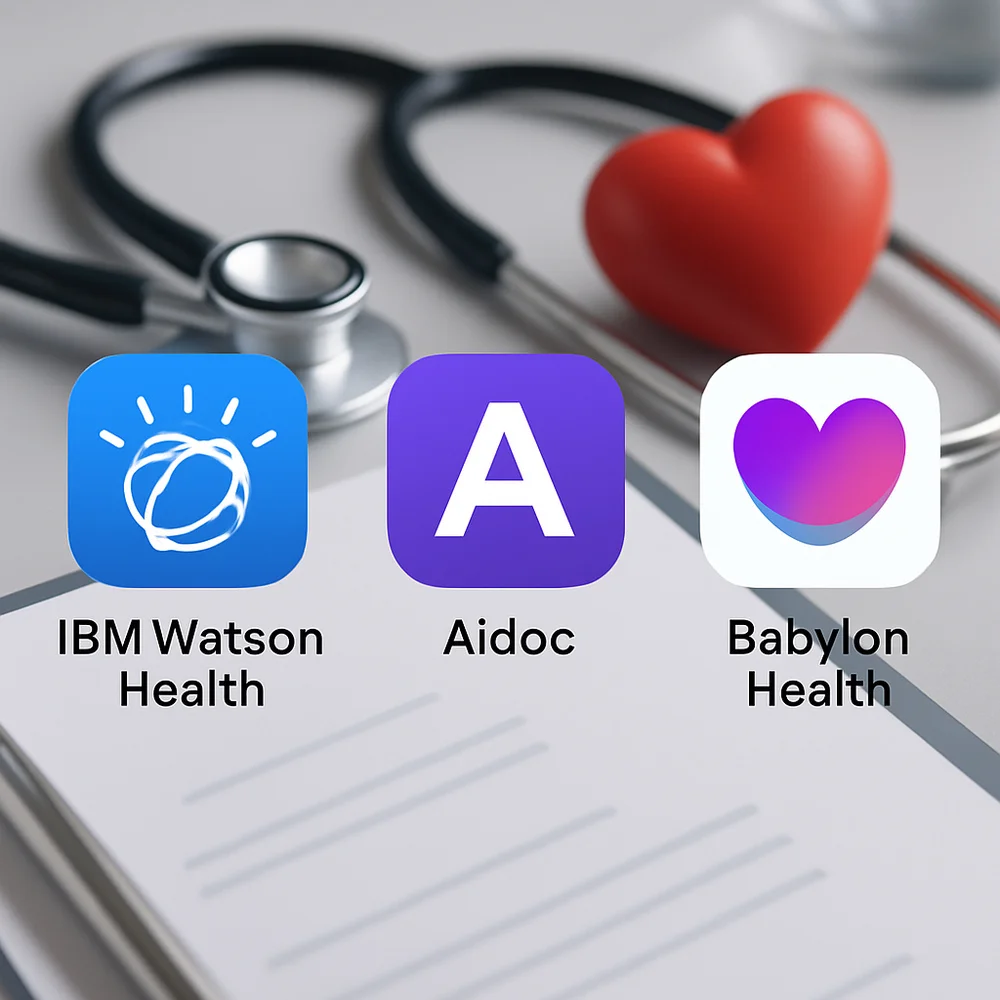
Important tools in this field:
- IBM Watson Health: Helps doctors find treatments based on medical research
- Aidoc: Reads X-rays and medical scans faster than humans
- Babylon Health: A chatbot that gives medical advice and connects patients with doctors
This means patients get quicker help and doctors make better decisions using up-to-date information.
AI in Legal and Financial Services
Lawyers, accountants, and financial advisors are using AI to save time on paperwork, risk checking, and reports.
Examples include:
- DoNotPay: An AI legal assistant that helps with simple legal issues like parking tickets
- Kira Systems: Reads contracts and highlights important sections
- QuickBooks AI: Suggests budgets, tracks spending, and predicts future income
These tools help professionals avoid errors, stay organized, and offer better advice to clients.
Final Thoughts
AI is not just a trend anymore. It is a real helper in our day-to-day work. In 2025, AI tools are saving time, boosting creativity, and making work more human by removing boring tasks. Whether you are a student, a manager, a freelancer, or a business owner, there is an AI tool that can support your work. The future is not about replacing people with robots. It is about working with AI to achieve more in less time.

